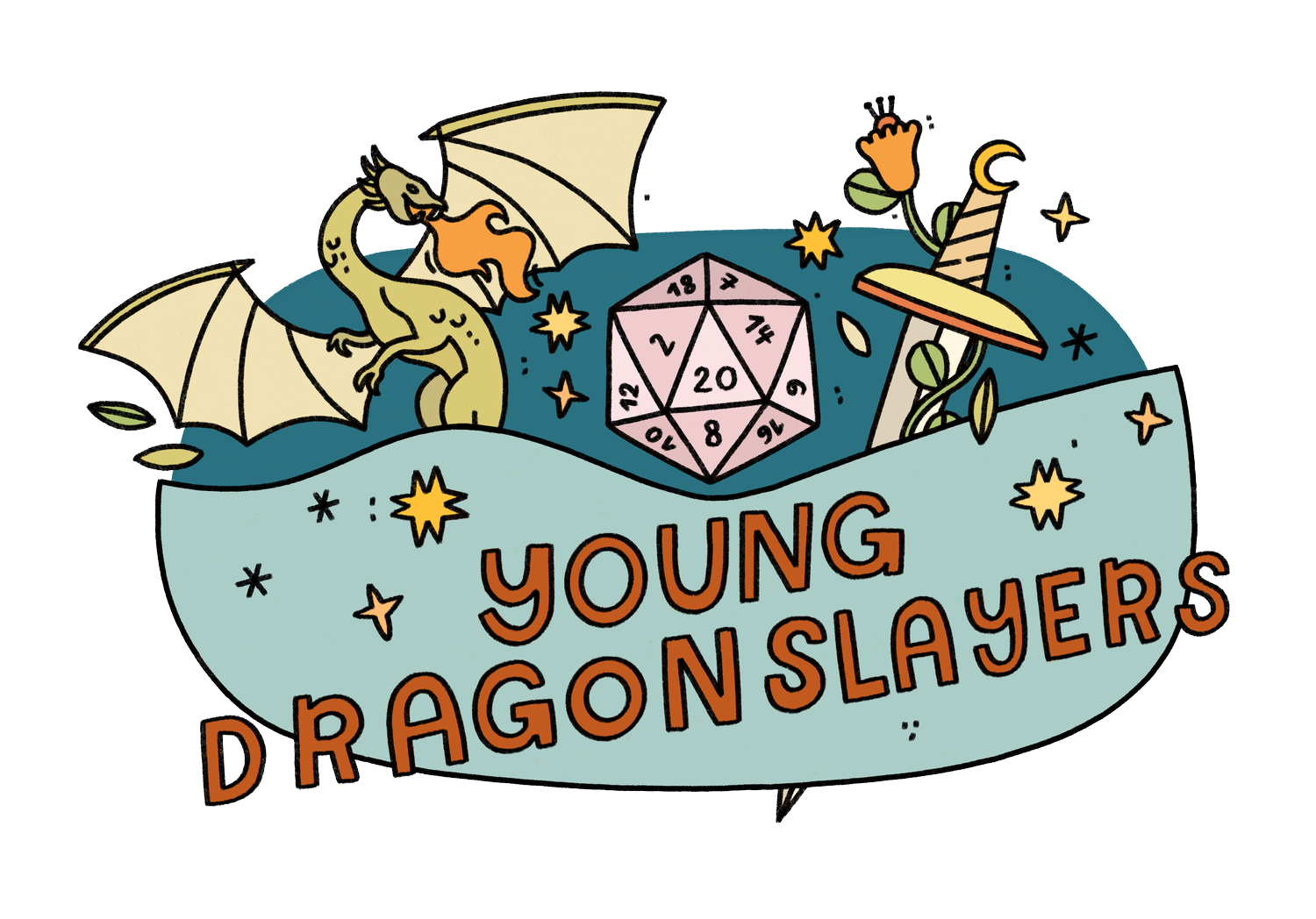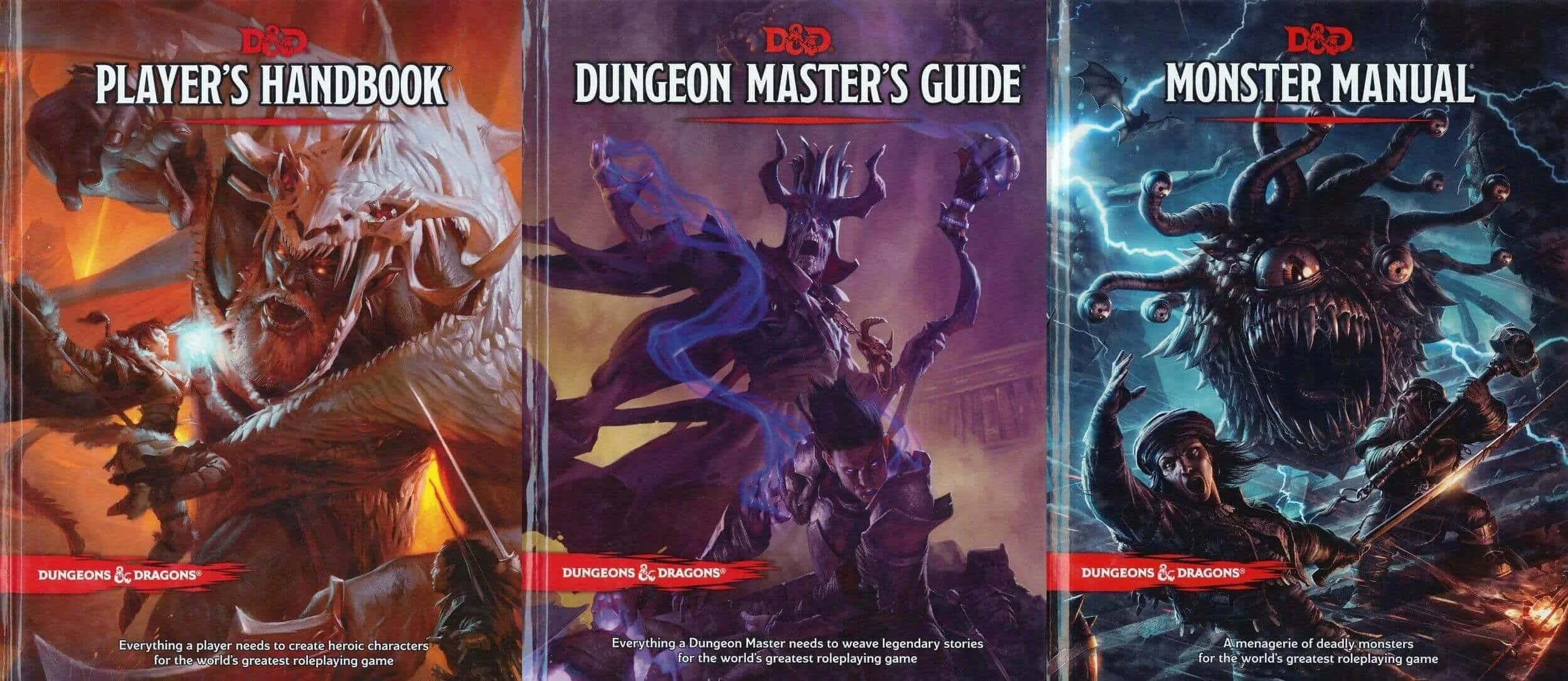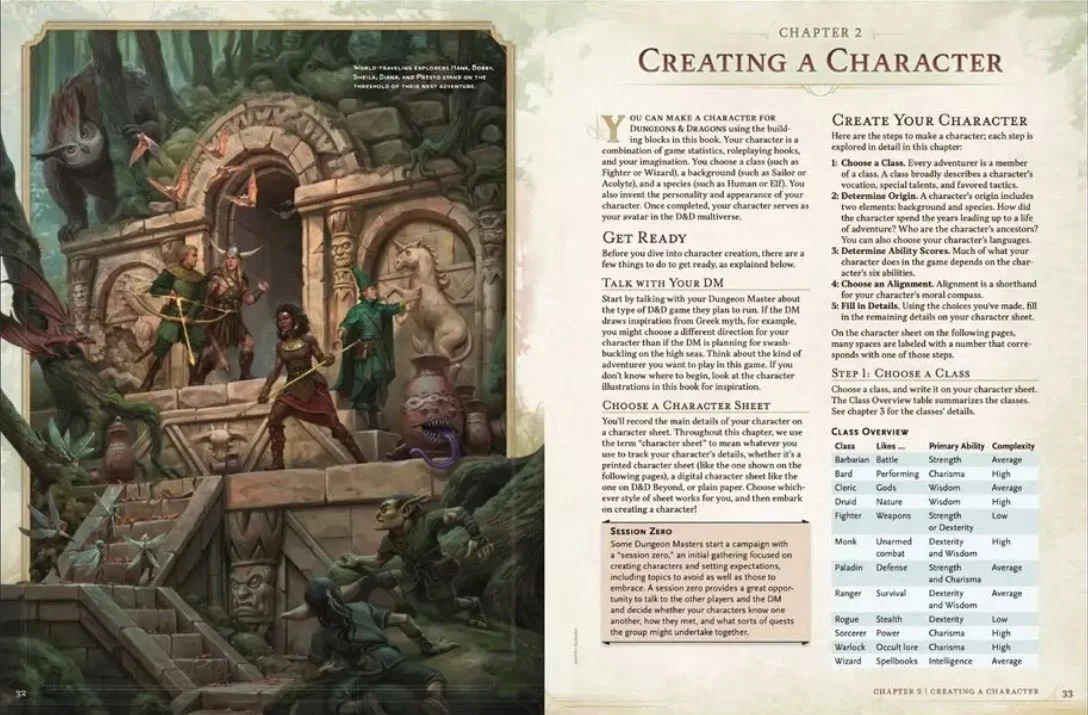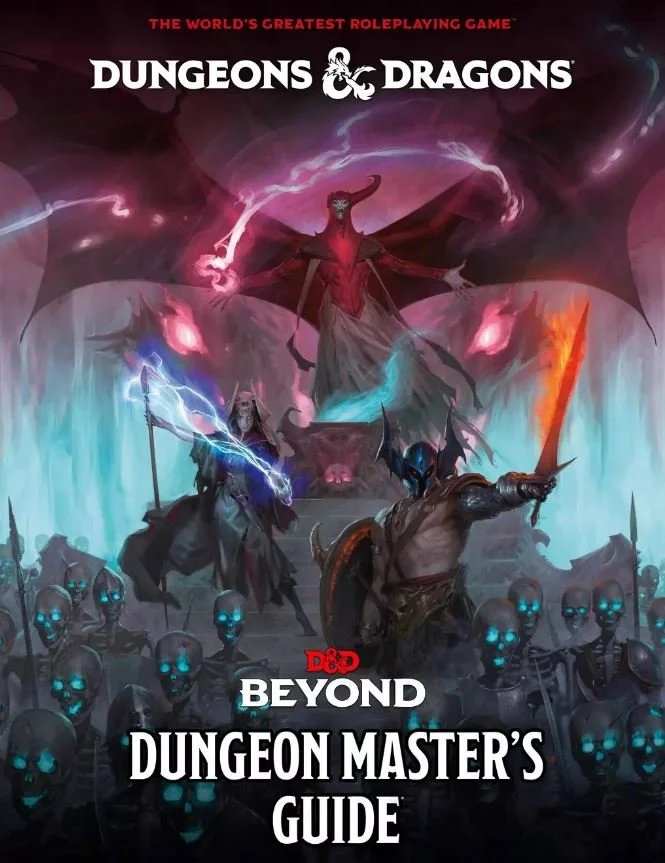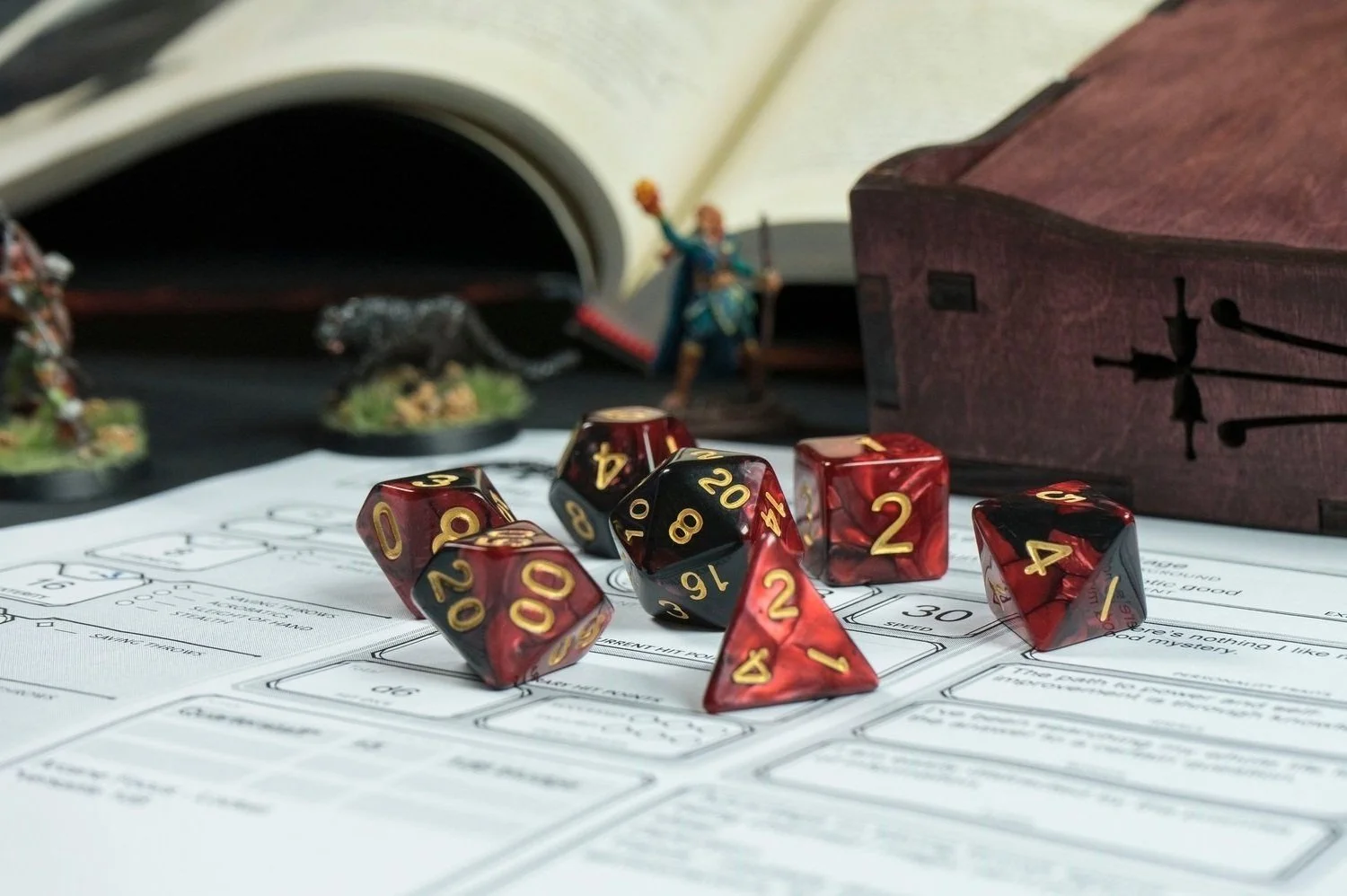Everything You Need to Know About the New D&D Books
If you're around the D&D sections of the internet, whether that's subreddits, YouTube channels, or even your TikTok FYP, you've probably at least heard about the upcoming release of a new version of D&D. This news raises a lot of questions, especially for new players. What is a new version exactly? What will happen to the old version? What changed? And, most importantly, how can my D&D group deal handle this? D&D is our bread and butter here at Young Dragonslayers™, so let us guide you through what this means for D&D and how you can expect the game to change (or not).
What are D&D Books?
If you only play D&D online, like we do, you may never have encountered D&D books in real life (You should check them out if you haven't - they're pretty cool). D&D is older than the internet; it used to be exclusively played with books, pen, paper, and whatever other materials could fit on a table (hence the term “tabletop roleplaying games”). The rules to the game and information like character options, spells, monsters, and items, have all been published in books, the contents of which have only recently made their way online.
For decades, there have been three main D&D books. The Players’ Handbook (PHB) tells players everything they need to know about how the game functions and gives rules for how to make a character. The Dungeon Masters’ Guide (DMG) contains helpful information for Dungeon Masters, the people who run the games. And the Monster Manual (MM) is a compendium of monsters to fight (to see some cool entries from the MM, check out our posts covering dragons, mythological creatures, and sea creatures). The people working on D&D consider them one big book split into three parts, like Lord of the Rings (Unlike Lord of the Rings, you truly only need the PHB to play, but don't tell them I said that)!
What Are D&D Editions - and How Does the New D&D Edition Work?
The version of Dungeons & Dragons you're probably familiar with is actually the 5th Edition of the game, commonly called 5E. The very first edition, “Dungeons & Dragons,” came out in 1974, followed by “Advanced Dungeons & Dragons” in 1977, the second edition (2E) in 1989, a revised version of 2E in 1995, a third edition (3E), simply called “Dungeons & Dragons,” in 2000, a revised version of third edition (3.5E) in 2003, a fourth edition (4E) in 2008, a 4E-compatible version called “Dungeons & Dragons Essentials” in 2010, and, most recently, the fifth edition in 2014. So clearly, Dungeons & Dragons is no stranger to new versions! (Or to confusing naming conventions…)
These new books aren't the sixth edition of D&D, but they're not regular fifth edition either. They're closer to 5.5E: a revision of 5th edition rules, like 3.5E before them. Here's how it works. When creating a character, you can choose to use the 5E ruleset you're familiar with or the 5.5E ruleset that's about to come out - both 5E characters and 5.5E characters can be in the same game! But, according to the rules, if there's a 5.5E character in the game, the Dungeon Master *has* to use all the new rules in the 5.5E books, no mixing and matching (of course, if your party is all 5E characters, 5E rules are totally fine, but 5.5E rules will work too).
What Are the D&D 5.5E Character Options?
Whew, that was a lot of context! But now that you know how the new version will work, you may be wondering - what makes these 5.5E characters different? What's the big deal?
First of all, every single class has been reworked. (The people at D&D refer to this as a glow up, but opinions vary. I recommend you look through the class announcements on D&D's YouTube channel or D&D Beyond and decide for yourself!) Several new subclasses have been added as well with a particular emphasis on psionic abilities (the D&D term for psychic powers).
Backgrounds and races are changing too. For starters, races are called species (this is more accurate, so I was already doing this in my games anyway!), and they no longer carry increases to ability scores. Instead, beginning ability score increases are tied to background (Similar games, like Pathfinder 2E, have done this already as they shift more focus onto backgrounds). These backgrounds also come with feats: special abilities that can be found nowhere else. We have been promised several new feats in 5.5E including “Epic Boon” feats that are only available to characters who are 19th level and above.
What is the New D&D Gameplay Like?
Player characters aren't the only things changing in the new books; the rules for how the game is played work differently as well. We don't know all of what will be changing, but there are a few new rules we know are coming. In 5E, Inspiration can only be applied to a d20 check - that is, an attack roll, ability check, or saving throw. But in 5.5E, they introduced a new version called Heroic Inspiration that can be applied to any die roll. In 5E, chugging a Potion of Healing or Experimental Elixir took up a full action on your turn, essentially preventing you from making attacks that round. In 5.5E, this only takes a bonus action, leaving player characters their full action to spend. These are smaller tweaks, many of which have been instituted as house rules (I tend to stick with Inspiration as written, but you'll never find me making a player spend a whole action to sip a potion)!
Some aspects of the rules have been entirely redone, like weapons. We have been promised a greater variety of weapon effects and weapon choices so that selecting which one you'll wield will be dependent on more than just the damage die. Additionally, they have beefed up the crafting rules, which will be welcome in my games (Pretty much every monster fight end with my players looting the body for scales, teeth, horns, and anything else that might be useful to craft weapons, armor, or other specialized items)!
What Will You Do About the New D&D 5.5E Books?
As with all things D&D, it's up to your group. You should always be deciding as a team, with the guidance of your Dungeon Master, what rules you want to change, add, or get rid of, whether from 5E, 5.5E, or something else entirely. That's part of the beauty of games like these; the games themselves are presented to you one way, but you and your D&D group are the ones who get to make the story, craft the world, and decide if you want to make things work a different way.
If you don't have a D&D group and are looking for one, we run online tween and teen groups here at Young Dragonslayers™. We'll find you a group that fits your play style, game preferences, and even the kind of adventures you want to have. And if you're eying the new books in the hopes of running a game yourself, we have a course that will help you build the skills you need to become a great Dungeon Master yourself!
